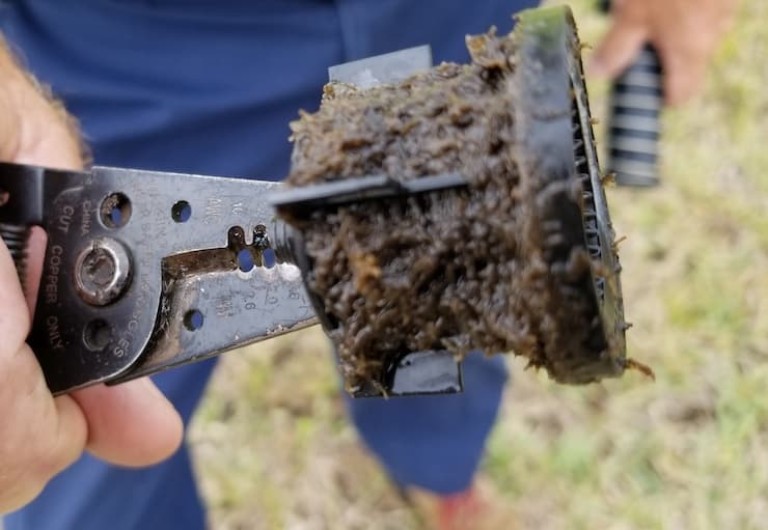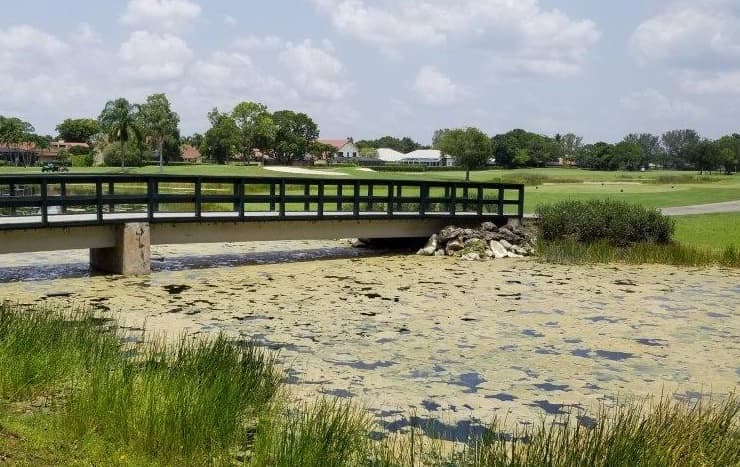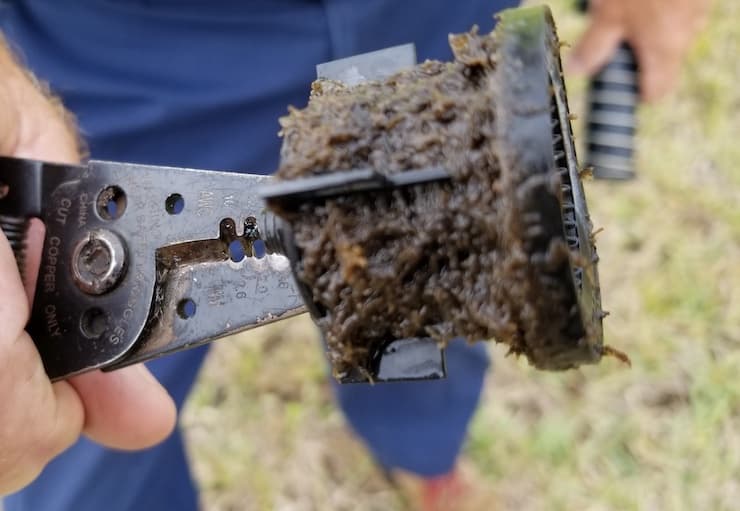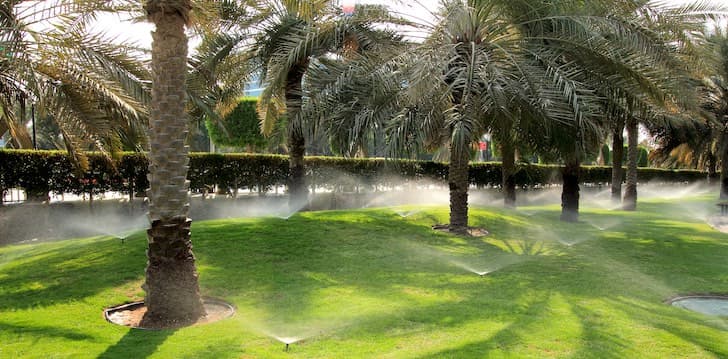
Before looking at the impact that bryozoans can have on an irrigation system it’s probably worth taking the time to explore exactly what bryozoans are and how they interact with bodies of fresh water like irrigation lakes.
In simple terms, bryozoans are small, invertebrate creatures measuring no more than 0.5 mm (or 0.02 inches) in length. Although an individual bryozoan may be microscopic in size, the issues they cause arise from the fact that they don’t appear in water as individuals but rather as algae-like ‘colonies’.
In appearance, a colony of bryozoans often resembles nothing as much as a growth of moss or similar plant life, which is why they are also referred to as ‘moss animals’. The problems for anyone running an irrigation operation arise, however, when parts of the colony seen in open water break away and are carried into the workings of that system. They attach themselves to the surfaces of various components - pipes and filters etc., which then act as substrates to which the colony can attach - and multiply.

Untreated, bryozoans have the potential to clog parts of an irrigation system to such an extent that the system ceases to function entirely or, at best, is severely compromised in terms of irrigation water delivery. Ironically, since they thrive in nutrient-rich water and because of the way they feed, the presence of bryozoans in an irrigation lake is indicative of a healthy ecosystem. As they feed, the bryozoans filter the water, retaining the nutrients they need - and in doing so, remove both algae and floating sediment. The presence of a continuous flow of nutrient rich water through an irrigation system means that the bryozoans can quickly become well-established and grow to a size and density which is problematic.
The risk of bryozoans appearing in an irrigation lake is something that people delivering or managing irrigation in Florida have to pay particular attention to. This is due to the fact that the geographical area within the United States across which bryozoans are native runs east of the Mississippi river as far north as Ontario and as far south as Florida.
The Florida climate – long hot summers and mild wet winters – creates exactly the kind of conditions in which these creatures thrive, as indeed does the presence across the state of almost 8,000 lakes, 1,700 rivers, streams, springs and spring runs and large areas of wetland! If you have responsibility for an irrigation lake in Florida then monitoring the presence of bryozoans needs to be worked into your wider maintenance and irrigation management plan, and the right steps taken if they are found to be present.
The cycle of bryozoans impacting on irrigation systems generally follows the pattern set out below:
One of the more difficult aspects of dealing with bryozoans is the fact that, although the colony itself may appear to shrink during colder parts of the year, it is actually retreating into itself as a form of self-preservation. Rather than being killed off by a cold snap, a bryozoan colony will enter a form of ‘hibernation’ and revive when conditions improve.
The ability of bryozoans to survive in less than ideal environments is also based on these organisms’ ability to expel what are called statoblasts. These are microscopically small clusters of dormant cells contained within the original zooid (the name for an individual bryozoan), which generate a hard shell similar to the exoskeletons seen across the animal kingdom. Once expelled, the statoblasts can attach themselves in the same manner as the bryozoans, but are even more difficult to detect and remove due to their size. This ability enables bryozoans to reproduce and survive in harsh conditions, whether this is due to the weather or attempts to deal with them.

If you find bryozoans in the water of your irrigation lake – or clogging the irrigation system itself – then they can be extremely difficult to eradicate entirely.
The first and simplest course of action is simply to scour and scrub the affected surfaces manually, removing as much of the bryozoan colony present as possible. This is clearly a difficult, time consuming and labor-intensive task, however, and may involve certain parts of the system having to be shut down while cleaning takes place. Another reason why a manual clean is a less than optimal solution is that it is difficult to be certain that all of the bryozoans have been removed, a problem which is even more pronounced when it comes to ensuring all of the even smaller statoblasts have been removed.
Another possible option involves treating the water in question with the chemical sodium hypochlorite, usually known as bleach. This is not an ideal solution, however, as it isn’t EPA-approved for this use and can be dangerous for other organisms within the water which aren’t being targeted as nuisances. Given that the water in an irrigation lake is ultimately intended to maintain the surrounding vegetation many people will hesitate before introducing a chemical such as bleach into the water.
One solution utilized by the owners of an Indiana golf course involved dealing with the problem at source. The bryozoans in question were present in a retention pond used to supply the sprinklers which kept the course irrigated. Over the course of spring and again in autumn the sprinklers used across the course would become clogged with parts of bryozoan colonies separated from the inside of the irrigation lines. Within the retention pond itself the bryozoans could be seen to be growing along the rocks located along the shoreline, with the afore-mentioned statoblasts floating like a scum on the surface of the water. By removing the rubble, the owners of the course removed the substrate on which the bryozoans had been growing and only had to treat the irrigation system with chemicals once to resolve the problem entirely.

Of course, it won’t always be easy, particularly in larger irrigation lakes, to locate the precise location of any bryozoan colonies, and the ‘solution’ to any issue with bryozoans is always going to come down to maintaining a degree of vigilance which enables you to spot any issues as soon as they become apparent.
In terms of the irrigation equipment itself, the more efficient and effective the filtering on any intake pipes is, the less likely the colonies are to break off and make their way into the pipes themselves, but this places an extra emphasis on checking and cleaning and/or replacing those filters on a regular basis, before the build up of any bryozoans becomes such that the filters cease to function.